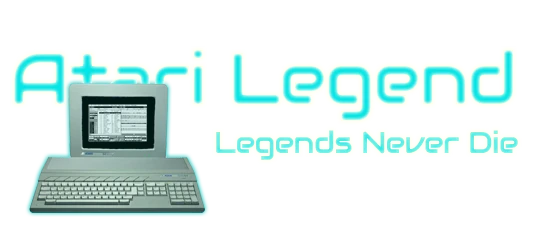

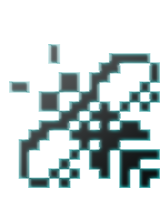





Zero-5 was one of the most ambitious games during the final years of the Atari STe's lifespan. An incredible spaceshooter which really showed what the STe was capable of. The second and last game released by publisher Caspian Software for the Atari STe. Andrew Gisby proved he was an amazing assembler coder. If you want to learn more about this amazing title, put on your space suit and get ready to kick some Morphon butt because this is the story of Zero-5.
There is currently no profile available in our database
1) Introduction
2) Computers & programming
3) D-Rez
4) ST Format
5) History of Zero-5
6) That intro
7) The soundtrack
8) Special voice effects
9) Height Mapping
10) Quantun Irradacators
11) Caspian Software
12) Relationship with the publisher
13) A commercial flop
14) The Jaguar version of Zero-5
15) Caspian was not commercially viable
16) Boxed copy
17) P.I.S.
18) Life after Zero-5 and Atari
19) Duckocide game
20) New games
21) All time favorites
22) Greatest achievement
23) Idols
24) Last words
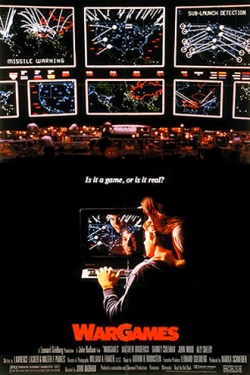
The Matthew Broderick classic movie WarGames was an extra motivation in computer programming for Andrew.
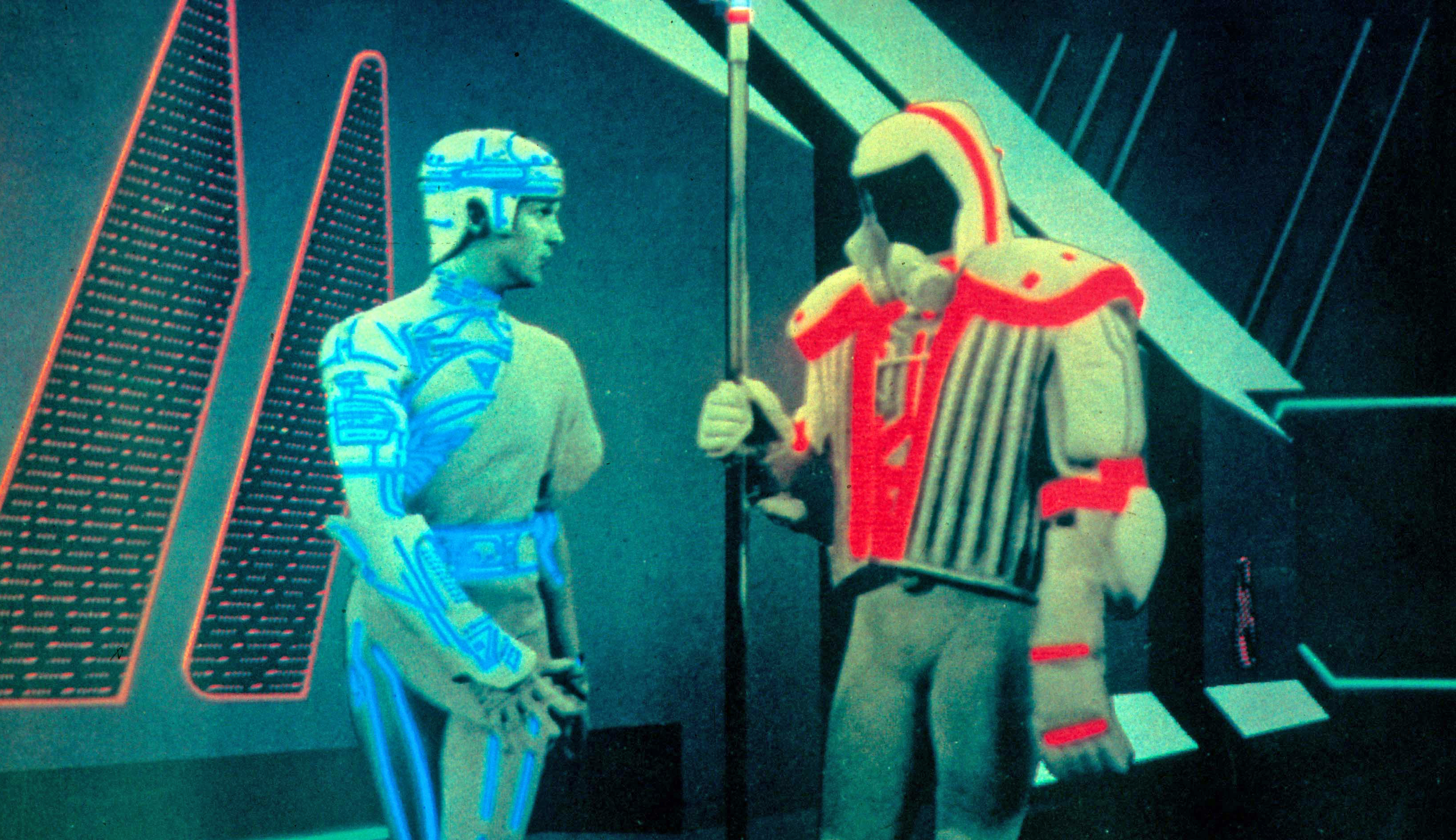
'When films like Tron appeared I became more and more intrigued in the “how” to achieve such computer visualisations.'
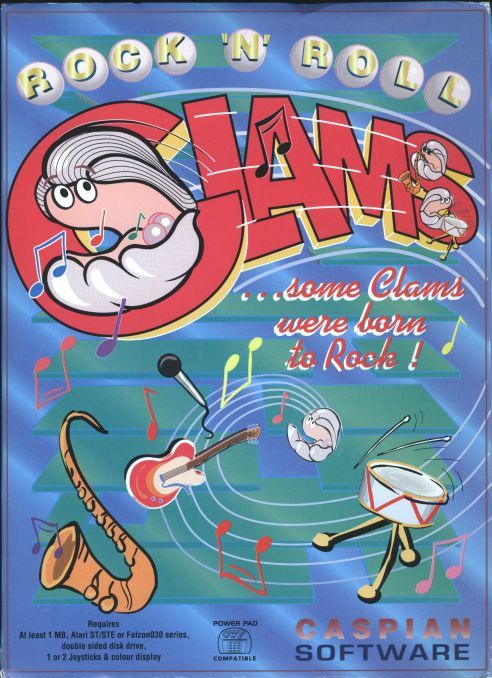
Rock and Roll Clams, a pinball-based platform game. The debut title for ambitious publisher Caspian Software.
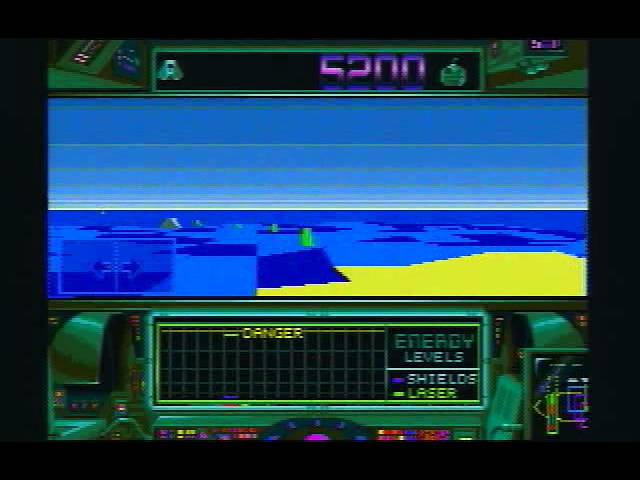
There were some crazy land levels in Zero-5, featuring polygon waves at sea. This is a shot from the Atari Falcon version.
1) Andrew, can you introduce yourself to the public?
Hi - So I’ve been around the sun over 50 times now (Still can’t quite believe that). I currently have a couple of business interests www.everyday-legal.co.uk and my independent game development studio Duckocide Games. Not two of the first things you’d put together but since giving up the corporate life I’ve enjoyed launching the two businesses. With Everyday Legal for example, you can use this website to help you with your legal needs. Let's say, your gamedev team might want an NDA (non disclosure agreement) in place. Well we've got some first class legal templates for that right here.
Oh... and I have two (grown-up) daughters and a very supportive and understanding wife!
2) Tell us about your history with computers and your fascination with programming? When and on which machine(s) did it all start?
Back in the early 1980s (in fact it was probably 1979/80 when it started) I was (like many) obsessed with coin-op video game arcades and the burgeoning home computer scene in the UK. I tried saving money for a home computer kit (Zx81) but my paper round pay was of course heavily weighted towards the arcades. I found computers and graphics utterly mesmerising.
Anyway, around this time my grandfather purchased an Acorn Electron and the interest in programming (mainly graphics) started. In the early 80’s I was in my first few years of secondary school. There was one computer in the whole school (RM 380Z). Even for then, it was an old computer really. I spent as much time as I could on it. I recall getting banned from using it? 1983? About the same time the film War Games appeared. Go figure. I also scored an after school and weekend job in a local computer store. That was incredible. I got to play around with BBCs, Oric Atmos', Commodore PETs, Vic 20s, C64s, Zx Spectrums, Apple IIs. (I recall a local taxi firm asking me if I could write a program for them. I said “sure!”. I’d never touched an Apple II but spent a few days in the taxi office with a manual - I think it worked for them!), TRS-80s, Atari’s, Dragon 32s - all sorts. My parents eventually bought an Amstrad CPC.
Looking back at these formative teenage years, the die was well and truly cast. Everything was about video games, computers, Dungeons and Dragons and Hollywood films that all seemed to point towards a future that (to me) could not get here fast enough! I loved playing games like Elite and found the creation (modelling I guess) of imaginary worlds and realities incredibly alluring. When films like Tron appeared I became more and more intrigued in the “how” to achieve such computer visualisations.
Around 1986/1987, I started my first job as a computer operator. Basically, switching old VAX 11/7xx machines off then back on again and swapping in/out stacked removable hard drive disks the size of dustbin lids for back-up. By the way, when those things wrecked (read head crash for example), a unit the size of a small fridge would happily bounce around the computer room!
That job allowed me to buy my first personally owned home computer - I went for an Atari 520STe, a copy of Degas Elite and (of course) HiSoft Devpac with the burning ambition of writing games in 68000 assembler! My evenings were set.
3) Before the release of Zero-5 you created D-Rez. Can you tell us a bit about this game? About its history? And was it your first game? It already features impressive sound and graphics and also has a very dark sci-fi feel to it. (It seems somewhat inspired by the movie Tron). Did any of its code end up in Zero-5?
Ah, spot the influences. I guess D-Rez was an early attempt at being an “indie dev”. I thought I could make a bit of a name and some money on the shareware scene. Over the years, I’d submitted ideas and demos to publishers but never scored a contract. The game itself is a top down shooter drawing heavily from arcade classics like Asteroids and Smash TV. Everything had to be done in assembler back then. I was somewhat interested in the demo scene and so the game shipped with a music demo program I did as well (graphics, sound, music etc - The Quark). I was pleased to push a finished game out. Orders came in - I even had some in postal order form, which was an antiquated form of payment - and I replicated and sent off the disks.
I used to love assembler/machine code programming (I began thinking in it I’m sure). Over the years before Zero-5, I built up a massive library of routines and programs for everything from graphics and sound through to disk and file handling. I think everyone making games did (No “public” internet back then so it all came from books, magazines, the odd BBS and self learning). I have countless unfinished games and ideas (All on 3.5” FDs).
Great that you picked up on the sound and graphics. It was all state of the art for me. Now you have to understand this all happened over 3 decades ago so I don’t have perfect random access to my memories, but - I recall using the internals (like the BLITTER chip) and some resolution and palette swapping techniques to push the visuals and extend the stereo sound.
I recall creating an internal scripting language (assembly data structures) to deliver sound samples at different frequencies to multiple left and right stereo channels (STe had one left and right channel for sound but a few tricks could make it sound like more).
The biggest challenge in Zero-5 were the graphics though. I guess it was my ode to Elite, Starglider, Interphase and all those other great 3D games. Yes, I did want to capture some of the cinema excitement of the space battles in films like The Last Starfighter, but honestly, the math (in assembler) was mind bending. The CPUs just weren’t fast enough and so a lot of look-up tables and integer (whole number) math tricks are used. Everything had to be traded off and adjusted relative to the speed of the CPU. Even though the 68000 had a very rich set of programmable commands and a wonderfully flat addressable memory model, you did your best to stick to the faster computational commands (less clock cycles = faster code) like add, subtract & bit shifting. Luxury commands like multiply, divide and on occasion conditional branching were avoided. I loved programming the 68000 - it always felt so future proof. It was odd (shame I guess) that the Z80 and the subsequent x86 CPUs won the popular day as I felt they were flawed by archaic memory page management rules.
So yes, in code terms, Zero-5 is a marriage of something old (my reuse of earlier developed code), something new (a lot of new techniques coded for the game), something borrowed (music replay and music composition wasn’t my own making) and something blue (errr ...the game menu is pretty blue!).
4) In a comment on our website you mention you wrote an assembler column for ST Format. How did you end up doing that?
Ha! Well you know what, I can’t remember exactly but I think it would have been off the back of Zero-5. After the interviews I’m sure they asked if I would like to write a regular programming article. Felt good as that is how I learnt really - People sharing know-how and tutorials in books and mags. Here’s an example (see page 55). The editor hated me - My grammar and writing left a lot to be desired!
5) Let’s talk Zero-5. You have done an excellent interview in the 90’s with ST Format and you did another interview a couple of years back with Atari Crypt. So we already have some details about the game. Still I want to ask. When did the Zero-5 journey begin? What inspired you for this story? What do you remember about the history of this project, and why a space simulation on an 8Mhz machine?
A lot of my inspiration comes from the Zeitgeist of the time. It’s hard to pin down what sparks the inspiration but I recall the term “Is anybody out there?” being something that resonated back then (still does I guess). e.g. I would have definitely been listening to this. I love Sci Fi and honestly, the story of extraterrestrials making contact is a well trodden one (I bet I was thinking about Star Trek the motion picture from over a decade before as well - You know, the one where V’ger [Voyager] comes back and wants to say “Hi! I’m back” but has some serious upgrades). I did chuckle also when the film Independence Day came out a year or two after Zero-5 - Similar concept (aliens wanting earth). Except in Zero-5 of course, Earth was ready with “DEFCON”!… Oh wait, Earth Defence Force, that’s the story line from that childhood favourite “UFO” isn’t it... (!)
6) What strikes me with Zero-5 is its dark and haunting atmosphere. Right from the get-go, during the intro, we are treated with digitized speech and photos, combined with a weird, breathing kind of sound effect. It almost has a Stanley Kubrick's 2001: A Space Odyssey feel to it. Was this intentional? Is this the effect you wanted to achieve?
Oh yes, I spent ages on that intro. In fact, I do find to this day that a scene, sound or visualisation in my games can often become the core / project anchor for me. A constant reminder of what I’m trying to achieve.
That intro wouldn’t have taken up too much memory but I wanted to convey a grand historic passage to the time of Zero-5. Give the game some gravity. Of course, the sound came out of crappy TV or monitor speakers back in the day, so you could get away with some pretty slow sample speeds (just about)! Rather than it all being a utopian Star Trek like vision, the foreboding was all about that fact that reaching out (Space race, Voyager, etc), we were observed by somebody out there and with envious eyes, they drew their plans to invade (... Oh wait didn’t H G Wells do that!?). Artistically, the way it suddenly bounces into the “rave” track and menu was questionable (my excuse is that "it was the 90’s!"![]() but I did ask the musician to try and get a sense of impending threat, alert, etc.
but I did ask the musician to try and get a sense of impending threat, alert, etc.
7) The game also has an amazing soundtrack by Dave Newman, who also created the music for the game Sleepwalker. I love it. How did you end up with Dave?
That was all arranged through Caspian Software (the publisher). If I remember rightly, several tracks were worked on and 1 or 2 picked for the game. I don’t believe we met, but you are right, his music is great. I used to love those tracker modules. Lots of programming tricks in them to squeeze out better music and audio.
8) During gameplay we also have these amazing speech effects, it almost sounds as if the ST speech synth is possessed. It makes the game so unique and dark. What did you do to achieve this?
They are recordings of my voice. I used a sound sampler (ST Replay?) and a bit of faffing around with the samples. Can’t remember the exact technique, but if you record a voice sample, duplicate. One duplicate pitched high with short echo / reverb, the other low and overlayed them. You get a sort of robot voice. I had to try and blend out any recognition of my voice!
9) You mention you were most proud of the A.I. in the game, and the landscape missions. Can you go into more detail? What do you remember about this?
Well I guess the pride comes from the fact you have to do all the AI work inside a split second of each frame. I think for so many things flying around it wasn’t a bad effort. I tried to make the enemies respond to your actions and give each a sort of unique attack approach. Elite did this really well back in the day.
I was particularly pleased with the landscape though. It uses a bitmap (height map) to describe the topology of the land (pixel value = land height). So when you fly around it’s reading your position on the heightmap and drawing the land around you. It was super expensive in CPU compute terms. One of the reasons why the draw distance is so short. But, what the hell, I had a 3D landscape working! Oh, and I did animate the water (polygon waves). For me, this was breaking new ground and whilst I know now it wasn’t trail blazing, in my little unconnected corner of the Atari world it was for me. A real fulfillment of that “3d worlds” inspiration and interest from way back.
10) One of the coolest features in the game are the time warps. I’ve been playing Zero-5 a lot lately and just thinking of this, at the time, this was not seen in any game. It was ground breaking. Care to comment?
What space film doesn’t have great warps (time or otherwise)? I would have spent a silly amount of time tinkering with it. Anyway, the feature is an artifact of the mission scripting engine I built. I thought, “I need some major threat beyond boss ships in the mission. Wouldn’t it be great if the aliens could deploy and detonate a quantum device that threw you out of the timeline (and fight)?”. Like the hyperspace or smart bomb features in the arcade classics Defender and Stargate. In gameplay terms, you are thrown back to an earlier part of the mission. Influences for this are many. The palette swapping fractal warp sequence in Captain Blood was something I tried to emulate in 3D. It was too CPU costly and an interrupt headache though and gave up on that. Warp in Tempest , the bomb in the film “Dark Star” and “Back to the Future” (time travel) also spring to mind.
11) I would like to learn more about Caspian Software. How did you end up with them? Were you part of this company? Do you know any of its history? I know Caspian was highly ambitious, they had a lot of cool stuff in the pipeline, but in the end only released 2 games on the ST (albeit amazing titles), Rock & Roll Clams and Zero-5…
Chris Dillon(CEO of Caspian) was an amazing chap. Young like me but really ambitious. He put what money he had behind the company. You know, I can’t remember how we got in touch exactly, he approached me after seeing D-Rez I think? Anyway, we got on well. I showed him some demos of this space game I was working on… The rest is history. They were based in London. I visited a few times but I wasn’t based there - I was a home worker in the 90’s!
I know Rock & Roll Clams and Zero-5 impressed Atari UK and Chris secured a deal to write some Jaguar games (including a port or otherwise of Zero-5).
12) How was the relationship with Caspian and are you still in touch with any of those people? (Do you perhaps have some contact info?)
We got on great at the time. No regrets or anything from me. I couldn’t commit to the Jag work and had a new family on the way so we drifted apart really. I haven’t been in touch for a long time. Sorry, no contact details. Chris went on to be a producer at Eidos and I would guess moved on from there.
13) Zero-5 was a commercial disaster, which was really disappointing (for you). There were talks of releasing mission disks, but this never happened…? How do you feel about everything and do you have any regrets?
Honestly, it killed my interest in games on Atari home computers (or anything 16/32 bit). It was a burn out of a year or two to get it over the line. I can’t tell you how much effort went into developing the thing - I was holding down a day job at the time as well!
There was a mission scripting solution under the hood that meant we could introduce new missions and variations very easily and they loaded off the disks.
My biggest regret has always been the rather toxic experience after we launched. Within hours of the first sales, ripped versions were appearing on “Pirate” BBS’s etc. I hated it. We were such a small outfit, there was nothing we could do really. I guess the act of piracy (“ripping”) was a romantic/subversive counter culture at the time. So I withdrew from the Atari ST/Falcon scene. Caspian went to the Jaguar console only (no piracy there?). I left it all behind. All that said, I loved meeting devs, gamers and individuals at shows before and after its 1994 release. I’ve never lost the desire to do game development. It became a hobby for me after that though. My IT career was taking off.
14) After the ST release, work started on a Jaguar version of the game. This was a completely different game. Only the story and some other elements of the original were taken. And you had a consulting role. Do you have any memories or anecdotes of that time, that version of the game? Did you ever meet the team behind it? Do you know anything about the history of this version? Still in touch with these people?
Not a lot to say really other than the digitised voice in the game is me. I had very little influence on the Jag game (I didn’t seek it). It was very much Chris and Mathew's (another dev at Caspian) baby.
15) Caspian did not make any money on the Jag version, they made the same mistake twice. How is that even possible? Did these guys ever make any money at all? How could such a company actually survive for all these years? (I don’t mean any disrespect here, I’m just fascinated)
Chris was very passionate about making Caspian a success. Like any start-up, he found investment. I wasn’t involved in the running or financing of the company (I was contracted on payments and royalties for Zero-5). Most studios operate on cash injections from benefactors for a share of future profits. Just around the time of release, my understanding is that Caspian secured cash from Atari UK to write Zero-5 for the Jag. Unfortunately, Atari UK began to suffer its own cash flow issues and so promises (money, etc) were not kept. Caspian did its best to stay afloat, but without the income (low sales of games and Atari UK suffering) the company was on borrowed time I guess. I know we all worked long days and nights to succeed, but the Atari horse was the wrong one to back I guess.
16) Do you own a boxed copy of Zero-5? And if so, does it have a special place at home?
Somewhere! That’s bad isn’t it. All my Atari gear is stowed away in trunks. I have a rummage every now and again. Still got the Falcon as well.
17) Zero-5 used a system called P.I.S, Personal Image System. The user could send their photograph to Caspian (again … a very ambitious company), it would be scanned and you could use it in game. Did anyone send in their photo?
Ah, a bit of Caspian humour there. I myself didn’t take the P.I.S., but you know I think some people did. I seem to remember Chris calling me one day and talking about a few people sending in passport pics and me talking him through how to do it.
18) What did you do after Zero-5? And your ST/Atari endeavors?
Continued an amazing and successful career in Corporate / Business IT. Became a senior manager and company director. Raised two amazing daughters and enjoyed a healthy life with them and my dear wife.
19) You have recently(?) founded a new company, Duckocide games. What does that name mean? Can you tell us about the history of the company? And are you a full time game creator once more?
So, “Duckocide” is the original gamertag I chose on xbox when you needed a name for the brilliant / ground breaking Xbox Live. This name came from a clan name I had for an old PC-based World War II multiplayer air combat game (Air Warrior?… Crickey, I can’t remember the name). I was in a Squadron called “Targets”. My call sign was “Duck” - Targets. Targeting and killing a duck so many times (I wasn’t the greatest pilot) is (of course) duck-o-cide.
Anyway, that aside, my re-interest in game development really started to take hold on the PC with the likes of Microsoft’s XNA framework. CPUs, GPUs and faster machines in general meant you could write a game using managed code languages (like Java and C#). In fact, I used to dabble a lot with game development in Java (after Atari) in the late 90’s. What also really rekindled things was the fact that Microsoft would allow indie developers to build XNA games on the Xbox 360. That was it! I was back wanting to make games (initially for the Xbox 360) for people to play. I entered their flagship competition (Dream Build Play with a 3D game “Nanonomi” - The film “Fantastic Voyage” meets Breakout) and also released a couple of 3D shooter games (Tail Gun Charlie and Rail Gun Charlie). So the name Duckocide became more than a gamertag to me.
I was a very busy company executive so this was all just a hobby until 2019. I tried a number of “game engines”, but settled on Unity. I love it. I can realise ideas and visions so easily with it. It’s cross platform (contemporary platforms that is) and I love the fact I can (relatively easily) port games to mobile, PC and consoles.
2019 was the year (ok back-end of 2018 - it was a long notice period) that I decided to give up the corporate career to develop games fulltime! Didn’t know how long I could afford to do it, but I could now so let’s do it! So, I formed Rednova Digital Ltd and rolled Duckocide Games into it as a trading name. If you visit the web site, you can see the projects I’ve embarked on (some frozen, some active). 2019 was also the year I met an old work colleague of mine and we formed www.everyday-legal.co.uk (I spent a fair bit of time building this online business so 2019 (and 2020) wasn’t 100% game dev).
20) Tell us about your games. I’ve noticed you are working on a shooter called Vindex, which looks amazing. Another game called Finley, the color of Radiation, seems like a Deflector clone in 3D, but with aliens. It looks very atmospheric. I see a recurring theme here: space, aliens? How far are you in development? When is a release planned and for which systems? Would you consider releasing them for the new Atari VCS system?
OK, the life of an indie game developer is one of constant distraction, procrastination, inspiration and lack of time. If any of these games start to gain momentum I will definitely be looking to expand the game studio.
Vindex was the first project I embarked on as I started to exit corporate life in 2018/2019. It’s a shooter drawing on the idea of shrinking and entering a “Fantastic Voyage”-esque scene. It was meant for consoles and the gamepad control mechanism. It’s on hold but I may go back to it. It was quite advanced and close to being finished really. That said, this was my project to “stop playing with Unity” and get to understand it properly.
Touch Dungeons is a passion project that really needs a team to do it justice. An acquaintance of mine helped with concept art, but it is ambitious. I’d describe it as an augmented reality Rogue-like dungeon crawler. The arcade game “Gauntlet” was in part an inspiration for it. I loved the idea of a multiplayer game with lightweight roll playing projected onto a surface. It works really well and the AR element is great fun. All that said, there are many many of these sorts of games and projects in the works. It’s such an attractive area. It’s on hold for me right now.
Shibuki is a mobile only casual game. It’s out now. I got the idea during lockdown. I was out for a walk when it rained. The rain landed on my smartphone and I thought “There is a game in that”. So, I built Shibuki (it means splash or similar in Japanese) in a couple of months and pushed it out on Google Play. For me, it was a real thing to understand how to use the app stores as in what’s needed for promotion, that sort of thing. Suffice to say it has been an eye-opening surprise on the effort needed.
Finley's Colour of Radiation is the current project and is I hope a more desirable acquisition for casual game players. It’s a puzzler so I’ve got quite a few levels to design. I’m quite excited about it. I’d love to get some success on mobile with this, but I’m also looking to release on PC and perhaps console. It lends itself better to cross platform. You are right in that it’s a plumbing puzzle game (with light). I always like my games to have a backstory and theme. I thought the 1950/60’s comic book and UFO flying saucer fascination would be fun. So I latched on to it and went (literally) down the secret laboratory rabbit hole with secret rooms and deep secret levels. Did I mention the prize at the end?
If the barrier to entry on the “new” VCS isn’t too painful, then yes.
21) What is your all time favorite game? And do you have time to actually play a computer game from time to time?
I always think indie devs are the worst people to ask “Do you play games?”. Of course we do, but of course we don’t (...it’s all about the passion and time to code). I love to play games and do so when I can.
My wife gifted me a retro arcade cabinet for my birthday this year. So guess what, I’m a teenager again playing arcade video games. Wow they are difficult (of course, all they ever wanted is your money in the slot). Favourites on this (predictable?); Stargate, Joust, Gauntlet, Smash TV, Mr Do, Track and field… I could go on).
So, my all time favourite recent game is Halo (Xbox). I’m such a fanboy. Love the gameplay (SP and MP) and love the back-story.
Others I’ve played a fair bit more recently…
PC: The new “Baldur's Gate 3” and “Elite Dangerous, Horizons and Odyssey”
Xbox: Sea of Thieves, Forgotten Worlds, Halo, Any of the Elder Scrolls & Destiny
Mobile: Shibuki (of course)
22) What do you consider your greatest achievement in life?
01000101 01111000 01110000 01100001 01101110 01100100 01101001 01101110 01100111 00100000 01101111 01101110 00100000 01110100 01101000 01101111 01110011 01100101 00100000 01110100 01110111 01101111 00100000 01101100 01100101 01110100 01110100 01100101 01110010 00100000 01100110 01110010 01101111 01101101 00100000 01101100 01101001 01100110 01100101 00101100 00100000 01001001 01100110 00101110 00101110 00101110 00111111
23) If you could have a drink with anyone, who would it be and what would you ask?
Living - David Braben. We’d be drinking Pan Galactic Gargle Blasters and I’d be asking about his inspiration for Elite.
Dead - Douglas Adams. We’d be drinking a Brownian Motion enhancer (or a good cup of tea) and I’d be asking him about life.
24) Any last words of wisdom you like to share with the Atari community?
This could be a long answer, but I’ll stick to a few words; “Trust me, whilst seductive, divu.w and mulu.w are not your friends.”
Thanks a lot for this interview. And if you, the reader, would like to learn even more about Andrew and Zero-5, check out the interview on Atari Crypt from a few years ago.
And don't forget to check out the full documentary on Youtube
August 5, 2025 by grams88
Martin Brownlow is a living legend. Best known among ST fans for creating the beloved PD/shareware classics Grav and Grav 2, his games are still cherished by many to this day. From a young age, Martin knew he wanted to make games for a living...and he made that dream a reality. In fact, he’s still doing it today. Discover the full story and much more in this exciting new interview.
October 4, 2024 by grams88
Stacey Jamieson began his career at DMA Design, working on titles such as Oh No! More Lemmings, Walker, GTA and others. Over the years, he moved on to Electronic Arts (EA), where he contributed to major games like the Star Wars Battlefront series, Mass Effect, and Need for Speed. Today, he is the co-founder of Expression Games, where he continues to pursue his passion for game development. What an exciting career!
July 29, 2024 by grams88
Who doesn't love a good underdog story? Chris Sharp is a noteworthy apprentice of the renowned François Lionet, as he mastered the art of coding with the almighty STOS Basic. Chris crafted a few games for our cherished ST, including fan favourites like Magic Tomb and the Freaked Out series. Intrigued? Dive into our interview to revisit the era when game development could still be a solo endeavour.
July 16, 2024 by grams88
When Sega released its Master System, it came bundled with the game Alex Kid. To this day the game remains very popular, loved by many. One of those people is Terry Lloyd. More so, Alex Kid was the main inspiration for the Atari ST platform classic Axel's Magic Hammer. But that is just one of his many accomplishments. Terry has been around the block. Working as an artist and game designer at the beginning of the 80's for Gremlin Graphics, he then moved on to Core Design, which he helped get off the ground. During the 90's he contributed to founding the company Malibu Interactive. On the Atari ST, Terry's resumé include Dynamite Dux, Car-Vup, Rick Dangerous 1 & 2, Torvak the Warrior, WarZone and many more. Read all about this veteran of the games industry in this exciting interview.
April 18, 2024 by grams88
It doesn't always have to be about computers, coding and graphics. Adrian Powell, the artist behind the original Lemmings game, crafted all its artwork, including box art and promotional materials. His passion for painting lemmings has persisted over time and he is still painting lemmings to this day. Powell's work remains influential and has helped selling millions of copies of this classic (ST) game.
Currently 0 registered users online
In the past 24h there were 2 registered users online